Abstract
Twenty-eight penicillinase-forming cultures of Staphylococcus aureus and their penicillinase-negative variants were examined for resistance to benzylpenicillin, methicillin, cephalothin, and cephaloridine. The results supported the view that cephaloridine was more easily destroyed by staphylococcal penicillinase than was cephalothin.
In our tube-dilution tests, the minimum inhibitory concentration (M.I.C.) of cephaloridine for methicillin-sensitive cultures was never as high as some of the values reported by other workers who used apparently comparable methods. This was probably due to small differences in technique. The M.I.C. is an unsatisfactory measure of the antibiotic sensitivity of an organism which produces an enzyme which destroys the antibiotic.
Methicillin-resistant strains of Staph. aureus have an intrinsic resistance of `heterogenous' type also to benzylpenicillin, cephalothin, and cephaloridine.
Full text
PDF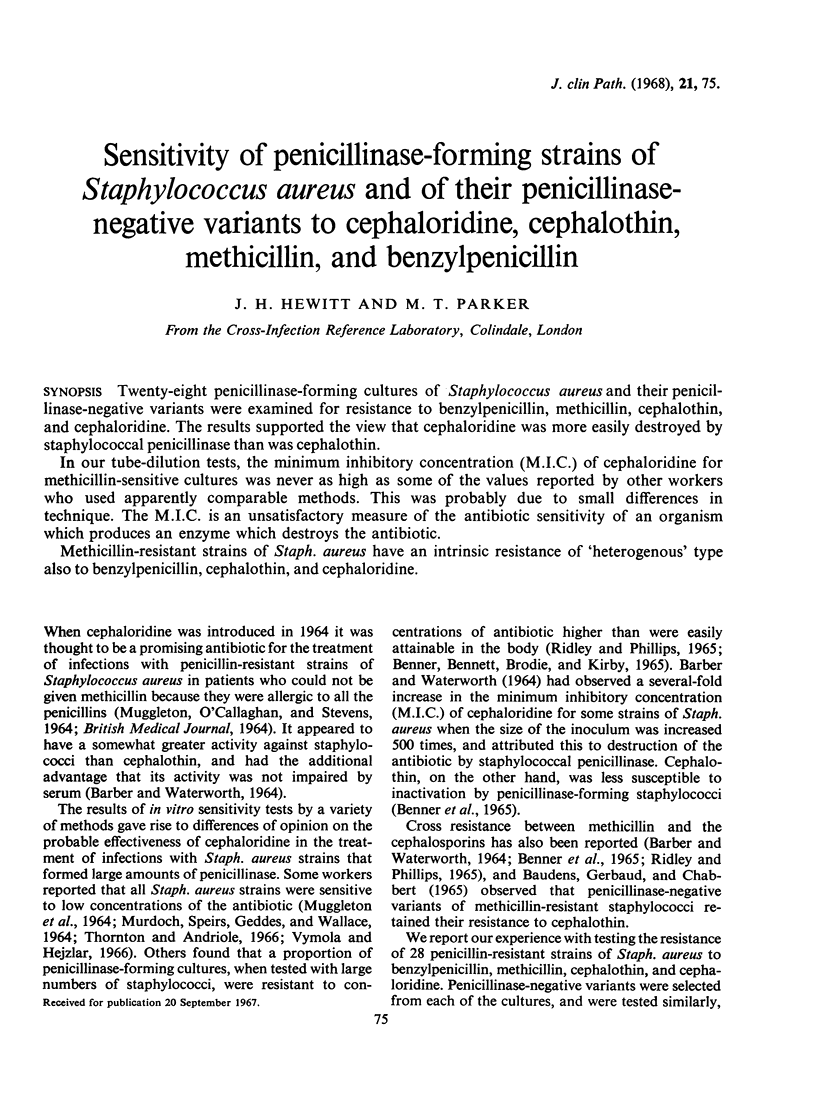
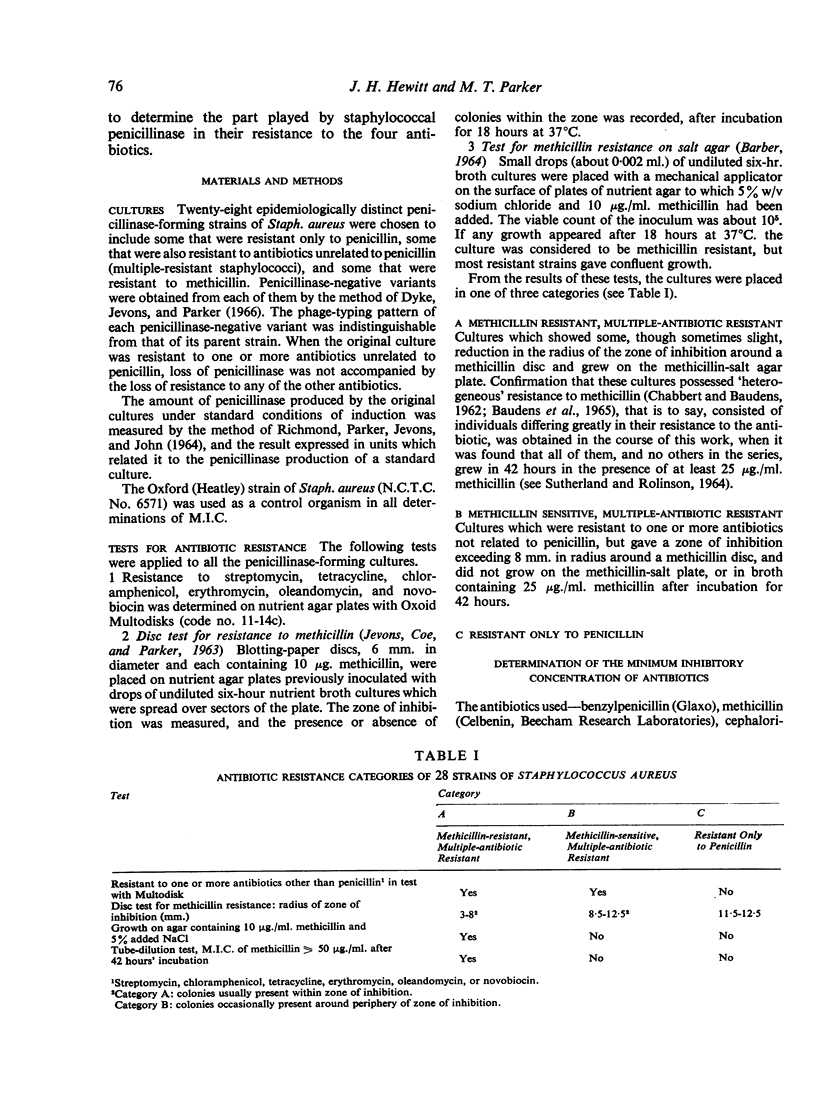
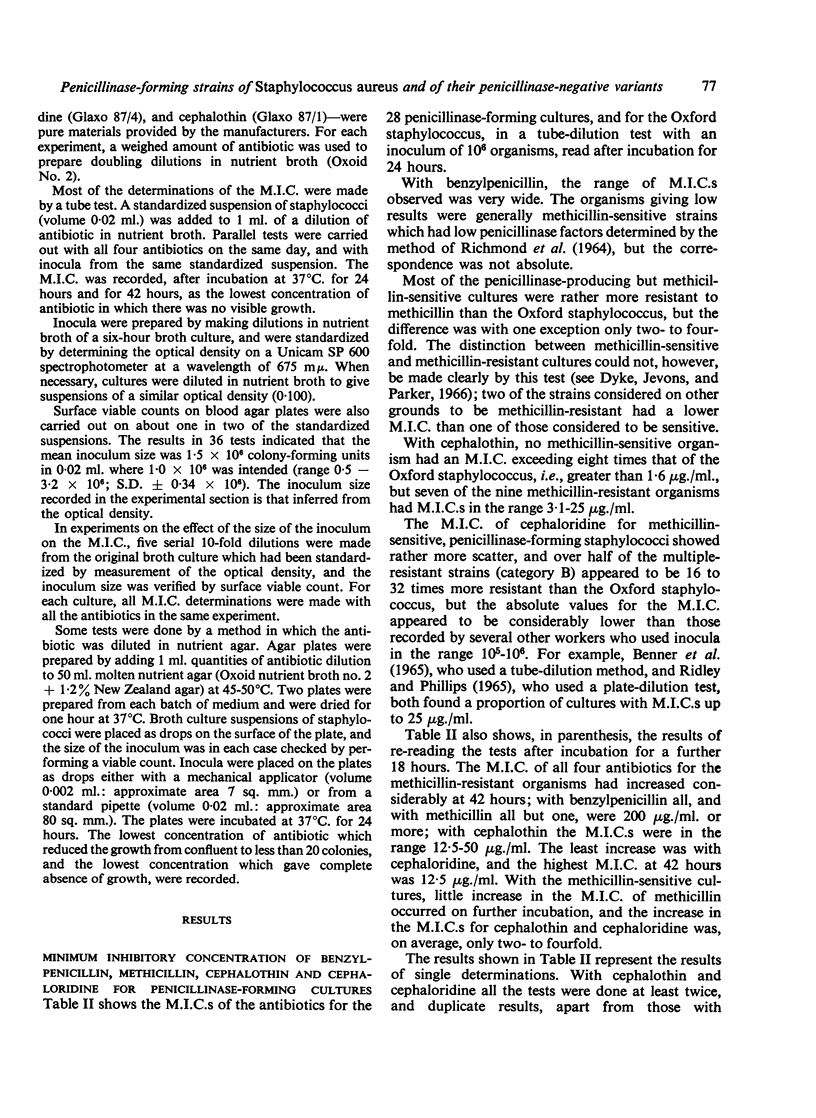
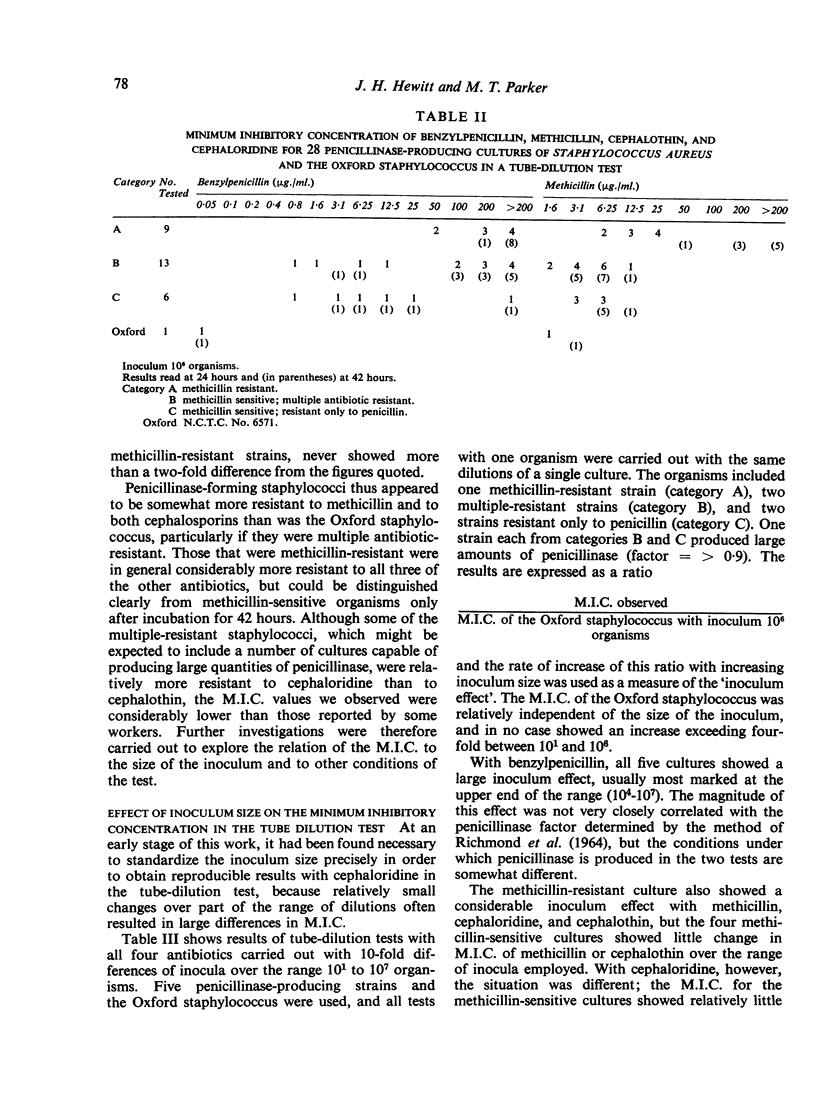
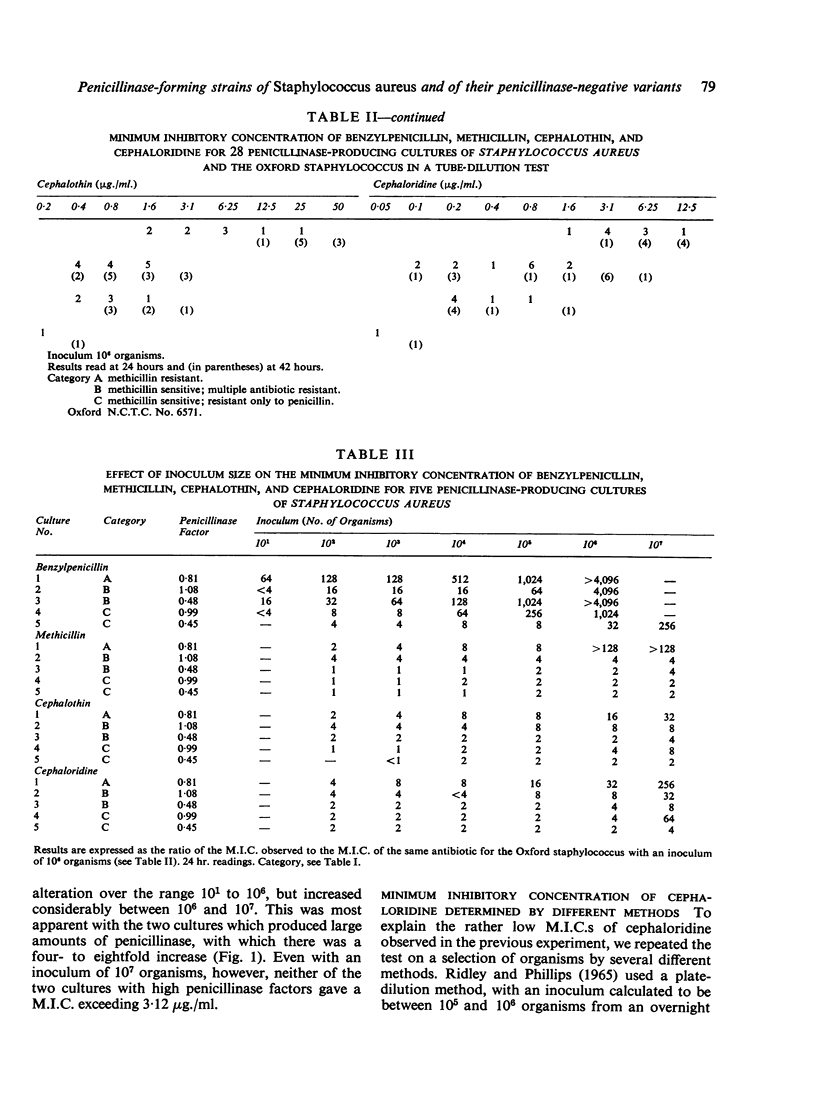
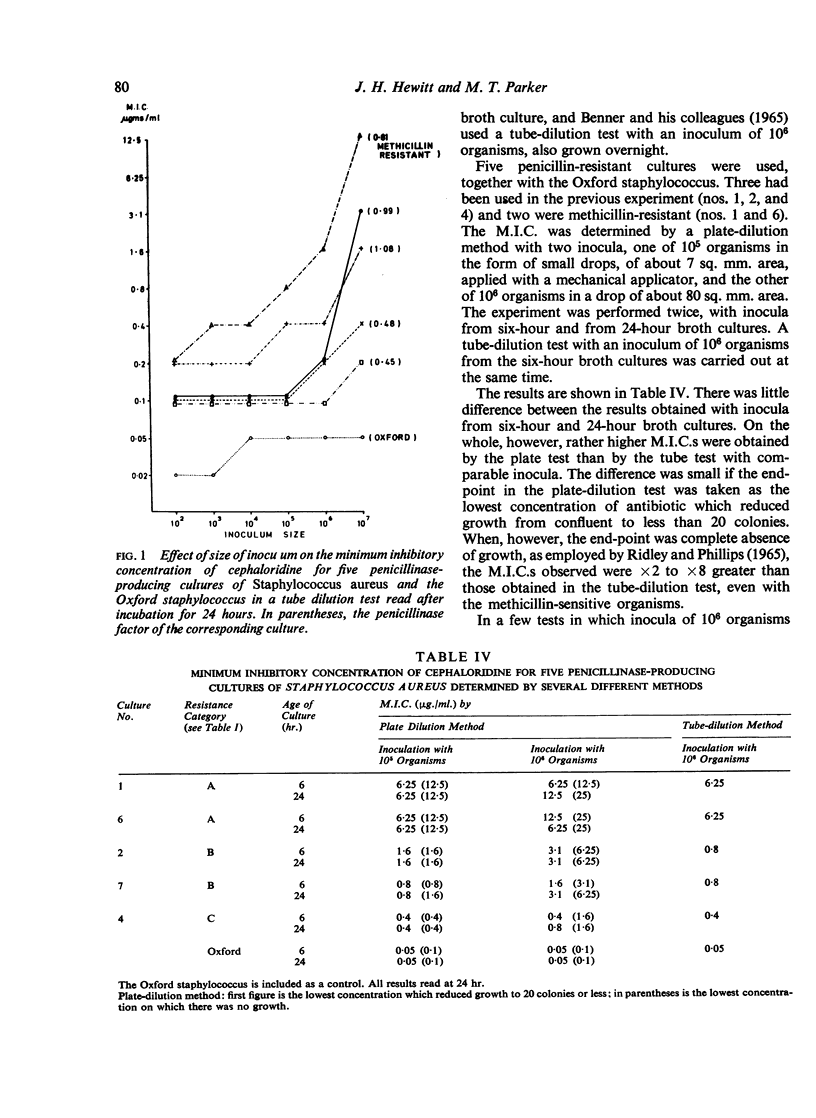

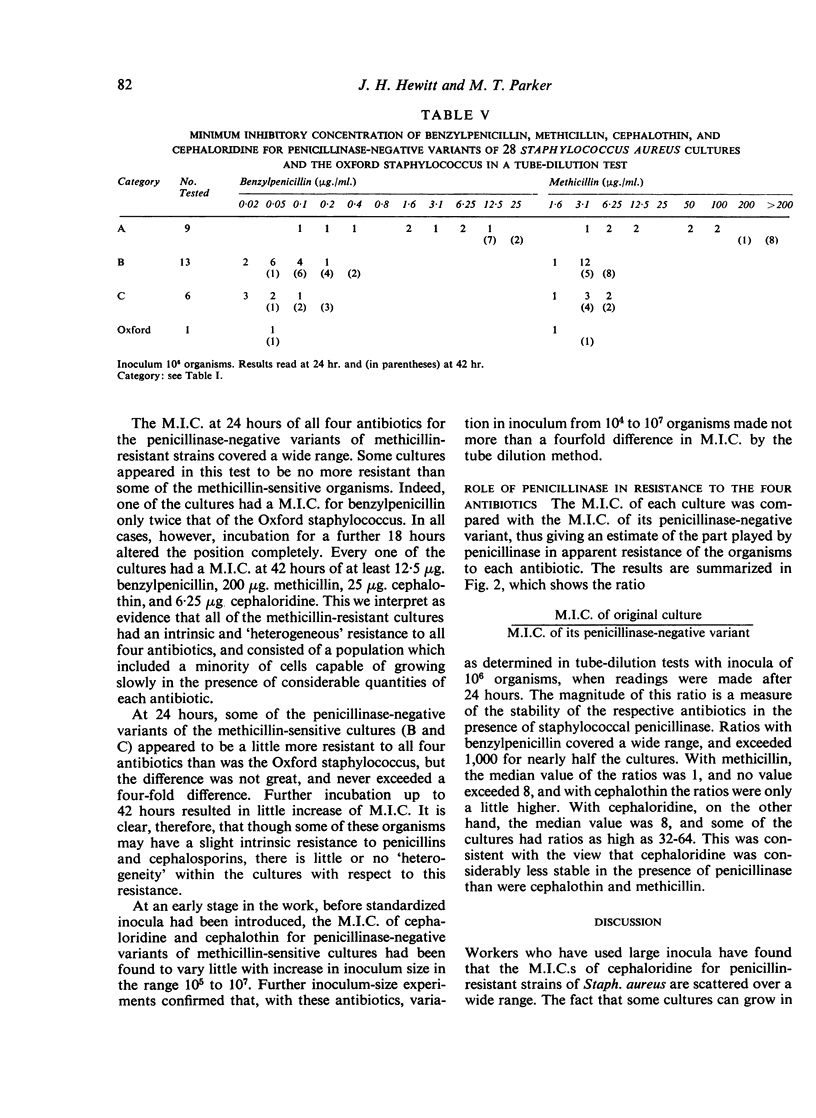
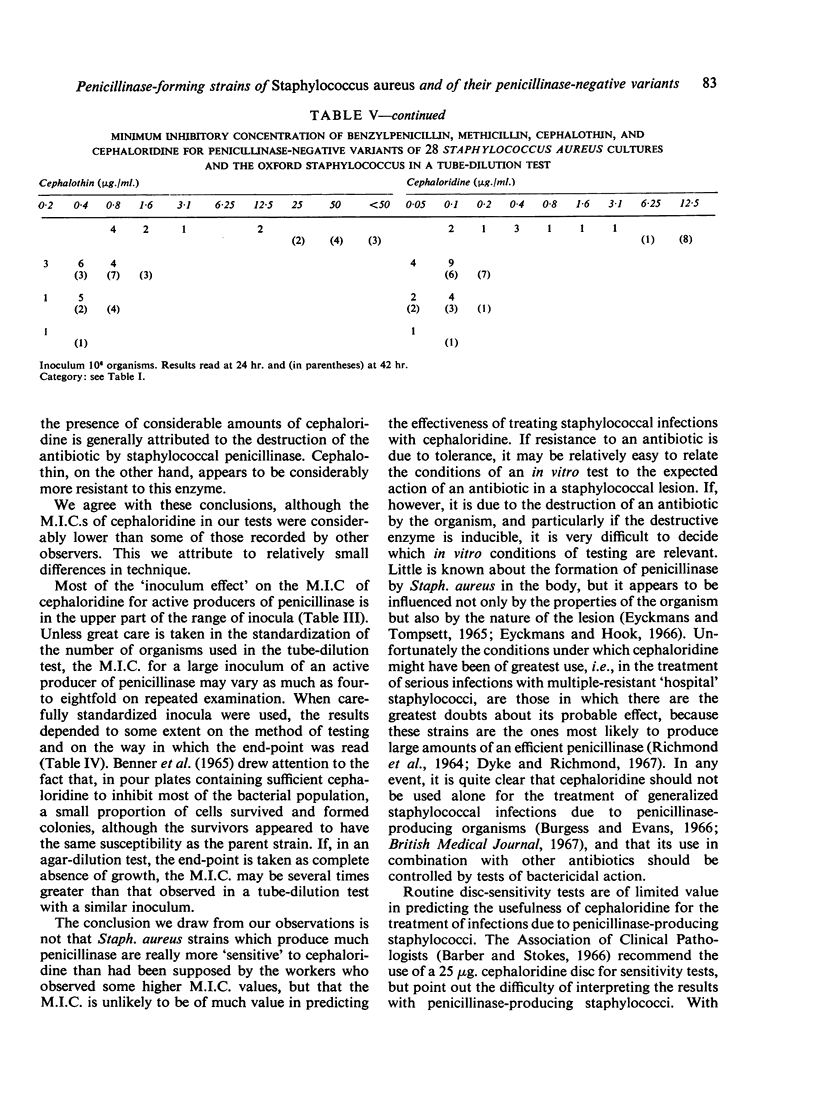
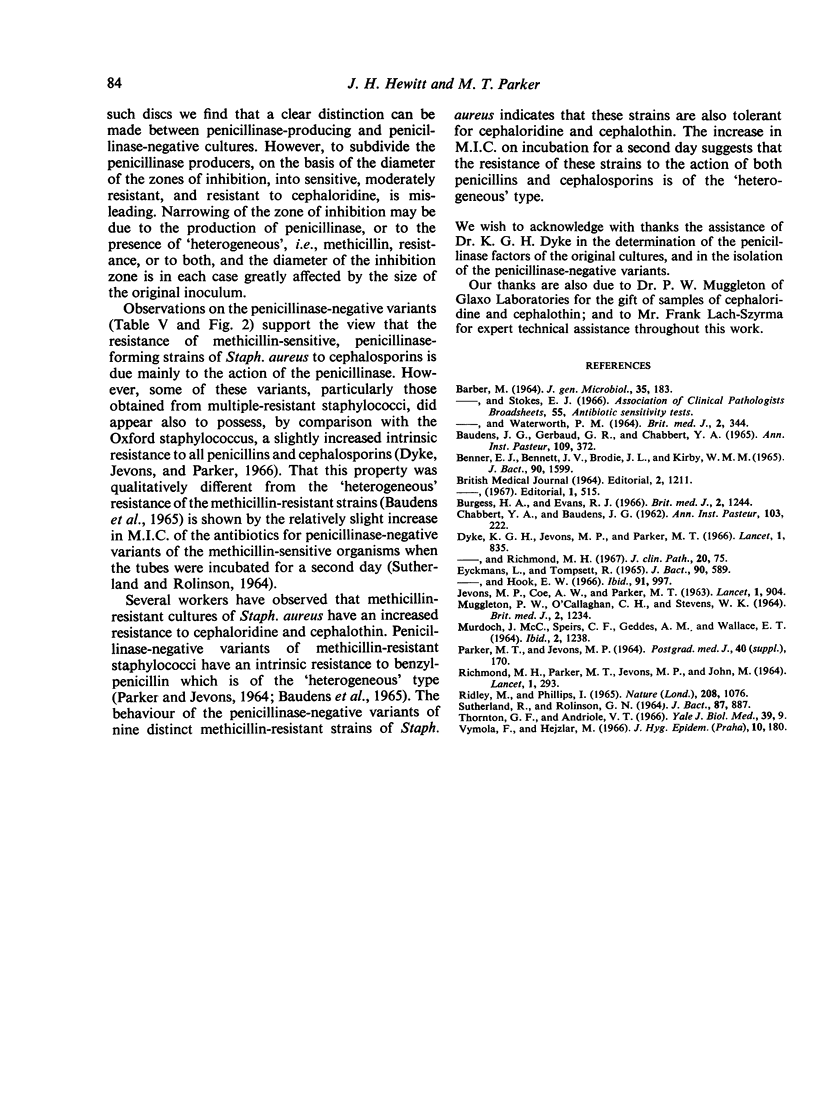
Selected References
These references are in PubMed. This may not be the complete list of references from this article.
- BARBER M. NATURALLY OCCURING METHICILLIN-RESISTANT STAPHYLOCOCCI. J Gen Microbiol. 1964 May;35:183–190. doi: 10.1099/00221287-35-2-183. [DOI] [PubMed] [Google Scholar]
- BARBER M., WATERWORTH P. M. PENICILLINASE-RESISTANT PENICILLINS AND CEPHALOSPORINS. Br Med J. 1964 Aug 8;2(5405):344–349. doi: 10.1136/bmj.2.5405.344. [DOI] [PMC free article] [PubMed] [Google Scholar]
- Baudens J. G., Gerbaud C. R., Chabbert Y. A. Conséquences de la disparition, sous l'influence de l'Acriflavine, de la production de pénicillinase chez les souches résistantes hétérogènes a la méthicilline, oxacilline et céphalothine. Ann Inst Pasteur (Paris) 1965 Sep;109(3):372–383. [PubMed] [Google Scholar]
- Benner E. J., Bennett J. V., Brodie J. L., Kirby W. M. Inactivation of cephalothin and cephaloridine by Staphylococcus aureus. J Bacteriol. 1965 Dec;90(6):1599–1604. doi: 10.1128/jb.90.6.1599-1604.1965. [DOI] [PMC free article] [PubMed] [Google Scholar]
- Burgess H. A., Evans R. J. Failure of cephaloridine in a case of staphylococcal endocarditis. Br Med J. 1966 Nov 19;2(5524):1244–1244. doi: 10.1136/bmj.2.5524.1244. [DOI] [PMC free article] [PubMed] [Google Scholar]
- CHABBERT Y. A., BAUDENS J. G. [Staphylococcus strains naturally resistant to methicillin and 5-methyl-3-phenyl-4-iso-oxazolyl-penicillin]. Ann Inst Pasteur (Paris) 1962 Aug;103:222–230. [PubMed] [Google Scholar]
- Dyke K. G., Jevons M. P., Parker M. T. Penicillinase production and intrinsic resistance to penicillins in Staphylococcus aures. Lancet. 1966 Apr 16;1(7442):835–838. doi: 10.1016/s0140-6736(66)90182-6. [DOI] [PubMed] [Google Scholar]
- Eyckmans L., Hook E. W. Induction of penicillinase by staphylococci in vitro and in vivo. J Bacteriol. 1966 Mar;91(3):997–1003. doi: 10.1128/jb.91.3.997-1003.1966. [DOI] [PMC free article] [PubMed] [Google Scholar]
- Eyckmans L., Tompsett R. In Vivo Studies on Staphylococcal Penicillinase. J Bacteriol. 1965 Sep;90(3):589–593. doi: 10.1128/jb.90.3.589-593.1965. [DOI] [PMC free article] [PubMed] [Google Scholar]
- MUGGLETON P. W., O'CALLAGHAN C. H., STEVENS W. K. LABORATORY EVALUATIOON OF A NEW ANTIBIOTIC--CEPHALORIDINE (CEPORIN). Br Med J. 1964 Nov 14;2(5419):1234–1237. doi: 10.1136/bmj.2.5419.1234. [DOI] [PMC free article] [PubMed] [Google Scholar]
- MURDOCH J. M., SPEIRS C. F., GEDDES A. M., WALLACE E. T. CLINICAL TRIAL OF CEPHALORIDINE (CEPORIN), A NEW BROAD-SPECTRUM ANTIBIOTIC DERIVED FROM CEPHALOSPORIN C. Br Med J. 1964 Nov 14;2(5419):1238–1240. doi: 10.1136/bmj.2.5419.1238. [DOI] [PMC free article] [PubMed] [Google Scholar]
- PARKER M. T., JEVONS M. P. A SURVEY OF METHICILLIN RESISTANCE IN STAPHYLOCOCCUS AUREUS. Postgrad Med J. 1964 Dec;40:SUPPL–SUPPL:178. doi: 10.1136/pgmj.40.suppl.170. [DOI] [PMC free article] [PubMed] [Google Scholar]
- RICHMOND M. H., PARKER M. T., JEVONS M. P., JOHN M. HIGH PENICILLINASE PRODUCTION CORRELATED WITH MULTIPLE ANTIBIOTIC RESISTANCE IN STAPHYLOCOCCUS AUREUS. Lancet. 1964 Feb 8;1(7328):293–296. doi: 10.1016/s0140-6736(64)92407-9. [DOI] [PubMed] [Google Scholar]
- Ridley M., Phillips I. Relative instability of cephaloridine to staphylococcal penicillinase. Nature. 1965 Dec 11;208(5015):1076–1078. doi: 10.1038/2081076a0. [DOI] [PubMed] [Google Scholar]
- SUTHERLAND R., ROLINSON G. N. CHARACTERISTICS OF METHICILLIN-RESISTANT STAPHYLOCOCCI. J Bacteriol. 1964 Apr;87:887–899. doi: 10.1128/jb.87.4.887-899.1964. [DOI] [PMC free article] [PubMed] [Google Scholar]
- Thornton G. F., Andriole V. T. Laboratory and clinical studies of a new antibiotic, cephaloridine, in the treatment of gram-positive infections. Yale J Biol Med. 1966 Aug;39(1):9–20. [PMC free article] [PubMed] [Google Scholar]


